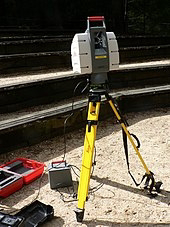I first heard of LiDAR three to fours years ago on shows on Discovery and National Geographic. They would use LiDAR along with a 3D graphics interpretation of the data and show how ancient structures could have looked like. If i remember correctly. LiDAR along with other software has ijkk236913https://www.instagram.com/p/C9_QFM5Jh7T/?igsh=MWI4Y3RtcWt1OXZzNw==https://www.instagram.com/p/C9_QFM5Jh7T/?igsh=MWI4Y3RtcWt1OXZzNw==236913 hidden chambers and other unknown passages in the pyramids in Egypt.
Thats great, but what is LiDAR you ask?
LiDAR, an acronym for Light Detection and Ranging, might sound like something out of science fiction, but this technology is rapidly transforming our world. By harnessing the power of lase LiDAR creates incredibly detailed 3D models of everything from cityscapes to rainforests, revolutionizing industries and igniting imaginations.
So, how oes this magic work? In essence, LiDAR emits pulsed laser beams that bounce off objects and return to the sensor. By measuring the time it takes for the light to travel, LiDAR calculates the distance with impressive accuracy. Imagine millions of these measurements happening in seconds, painting a precise picture of the surrounding environment.
The applications of LiDAR are vast and ever-expanding. Here are just a few examples:
Self-driving cars
LiDAR helps autonomous vehicles "see" the world around them, navigating obstacles and making safe decisions on the road.
Robotics
From exploring uncharted landscapes to assisting in precision agriculture, LiDAR equips robots with the spatial awareness needed for complex tasks.
Mapping and surveying
LiDAR creates highly accurate 3D maps of cities, terrain, and even historical sites, aiding in urban planning, disaster relief, and archaeological discoveries.
Environmental monitoring:
By tracking changes in forest canopies or measuring glacier melt, LiDAR provides valuable data for understanding and protecting our environment.
Beyond these practical applications, LiDAR also inspires artistic expression. 3D scans of sculptures and buildings open doors for virtual preservation and immersive experiences. The intricate details captured by LiDAR breathe new life into art and history.
However, LiDAR technology is not without its challenges. Cost can be a barrier, and data processing requires powerful computing resources. Additionally, ethical considerations arise regarding privacy and data ownership, especially in densely populated areas.
Despite these challenges, the future of LiDAR is bright. As technology advances and costs decrease, we can expect even more innovative applications across various fields. From revolutionizing transportation to unlocking new scientific discoveries, LiDAR is poised to shape the world around us in exciting ways.
So, the next time you see a self-driving car navigating the streets or marvel at a detailed 3D map, remember the unsung hero behind it all: LiDAR, silently transforming our world with the power of light.





Comments